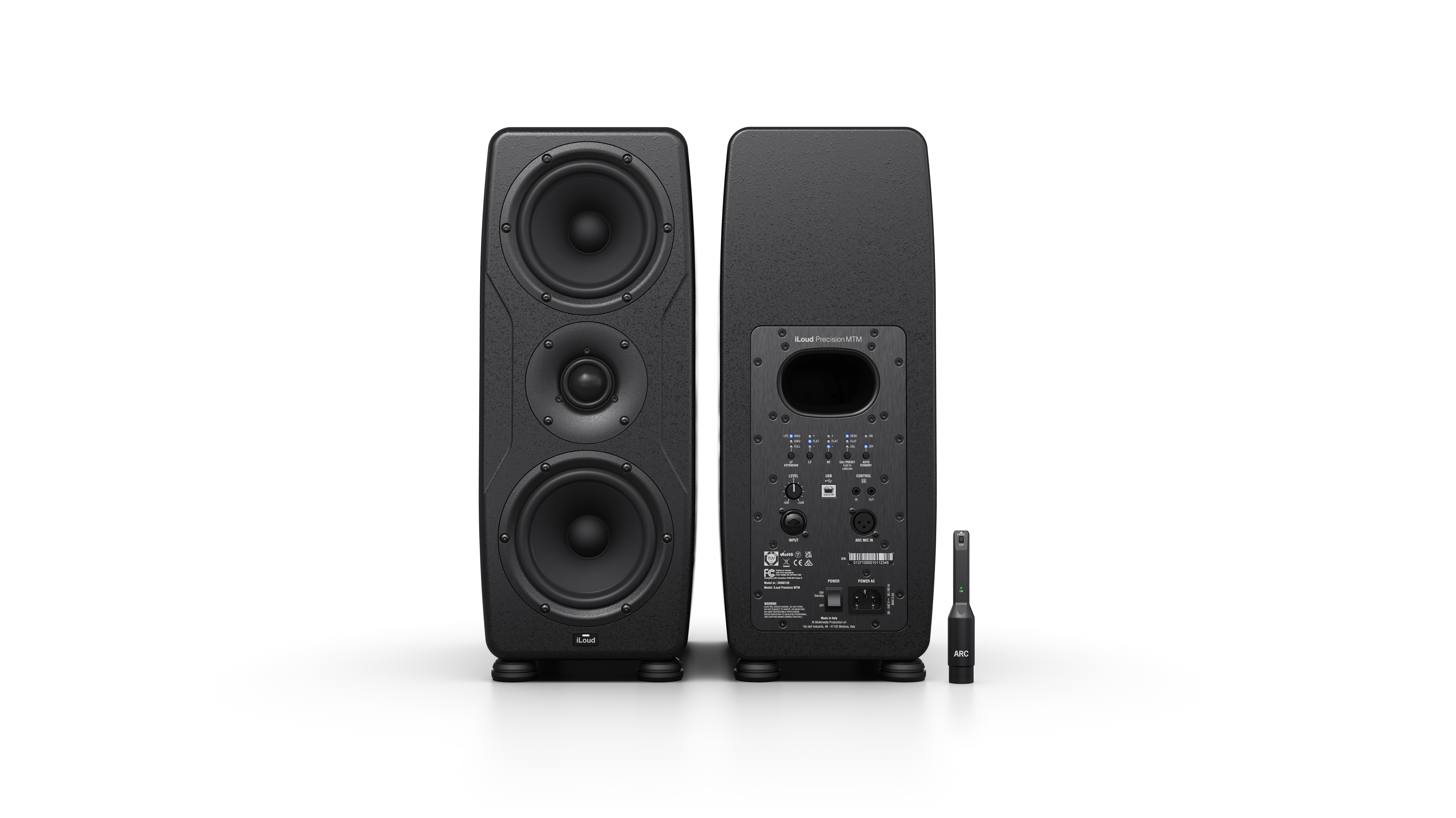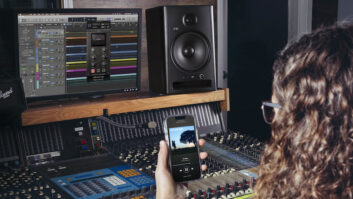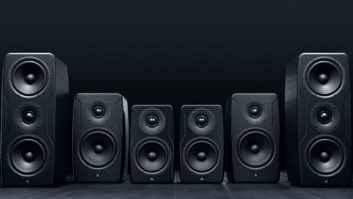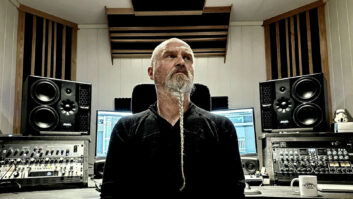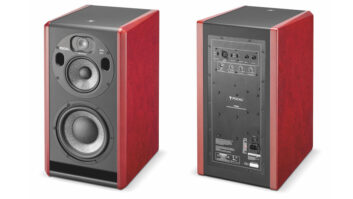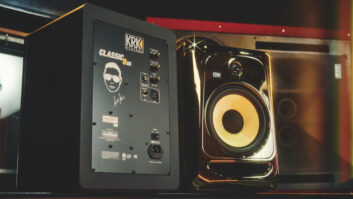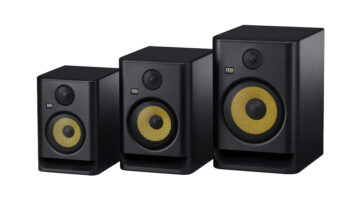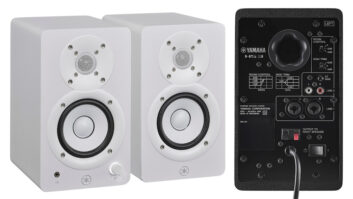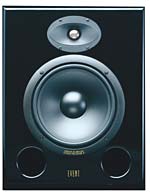
Event Electronics made a big splash years ago when it introduced the20/20 Series of powered, direct-field monitors, which brought the priceof bi-amplified, powered monitor technology to a level practicallyeverybody could afford. During the years, Event launched severalpermutations of the original 20/20 monitors, all based on a similardesign and technology. But while the 20/20 Series’ price-to-performanceratio couldn’t be beat, even Event could admit that there was room forsonic improvement.
Enter Event’s new Studio Precision monitor series ($1,499/pair),featuring a completely new cabinet, transducer and amplification systemdesign. The series comprises both active and passive models: the ASP8and PSP8 8-inch two-way and the ASP6 and PSP6 6.5-inch two-way,respectively. For this field test, we ran a pair of ASP8 monitorsthrough their paces.
ANATOMY OF A SPEAKER
The attractive Precision monitors’ face features a mirrored obsidianblack surface and sides finished in a black gloss. The cabinet isinternally insulated and constructed of ¾-inch vinyl-laminate MDF.The ASP8 weighs in at a reasonable 32.5 pounds. The front-mounted greenLED is part of a feature introduced with the 20/20bas: It doubles asboth a power indicator and an “approaching clip” indicator,which blinks when signal comes within 3 dB of clipping. The blinking isa bit odd, especially because most clip indicators are multicoloredLEDs that flash red when a clip is encountered. However, the blinkingdoes accomplish its purpose: It gets your attention.
Input connections are XLR and ¼-inch balanced. Event opted notto employ a combo jack; instead, the speakers feature a straight-wirepass-through circuit. This setup lets you pass a signal coming in onejack and back out the other jack for patching to a variety of otherinputs, such as a headphone distribution system or second monitors inanother room. A variable Input Sensitivity control is located on therear panel, giving ample control over input gain structure from -20 dBto max (defined as full output, as produced by a 1.1-volt inputsignal). There’s no denying this control’s usefulness, but setting itprecisely is tricky because there is only one detent, at -5 dB. Poweris supplied via a standard IEC Type II cable.
Both transducers are shielded, and the high-frequency driver is asoft-dome radiator with a ferrofluid-cooled voice coil. Thelow-frequency driver is a mineral-filled polypropylene cone featuring aneodymium magnet, high-temperature voice coil and damped rubbersurround. Dual “low air restriction” ports are located onthe face, allowing you to place the speakers against a wall or in anenclosure without affecting bass output. Frequency response for theASP8 is an impressive 35 to 20k Hz, ±3 dB, referenced at 500Hz.
Both the ASP8 and the ASP6 pack a whopping 280 watts of power perspeaker: That’s 200 watts to the low-frequency driver and 80 watts forthe high-frequency driver. The ASP8 and ASP6 both use 2.6kHz,fourth-order asymmetrical crossovers. (Passive models use a 2.5kHzsecond-order crossover.) Best of all, there are several controls on therear panel that allow you to tailor the monitor’s output to match yourlistening environment. HF and LF Trim knobs provide ±3 dB ofcontrol. However, these controls were not detented. (Event says these,like the Input Sensitivity controls, are deliberately not indented sothe user can make fine adjustments.) A High-Pass 80Hz Roll-off control,calibrated to the industry-standard Dolby spec, is available via apush-button, the perfect complement to a system with subs and/or bassmanagement systems.
SET UP AND TESTING
The ASP8s sat on 12-inch, freestanding speaker stands, which, inturn, sat atop a Nigel B workstation. They were placed upright in thetraditional stereo speaker position, where the listener makes up onecorner of an equilateral triangle. Each speaker was on a plane levelwith the listener’s head and approximately 10 inches from the wall. Thestudio is 30×30 feet, with a working ceiling height of 10 feet. Adummy ceiling hangs down two feet to hide wiring and air-conditioningducts. A combination of Sonex acoustic foam (egg carton and multibanddiffuser styles) and ½-inch acoustic dampening tiles are placedstrategically about the room to knock out reflections and standingwaves. On a scale of one to 10, where 10 is a totally“dead” environment, my room is a five. Digidesign’s 888/24interface provided the main stereo outputs, which connects to the ASP8inputs. All connections were balanced, XLR to ¼-inch. Inputsensitivity on both monitors was set at 75 percent.
I begin every monitor field test by checking out commerciallyavailable CD releases (Madonna, Sting, Dave Matthews, etc.) to get afeel for the speakers’ general tone. I was immediately impressed by howeven the ASP8s sounded: not too flat, not too hyped up, but just right.Next, I ran a series of tones through the system at a variety of levelsto hear if the frequency response specs are accurately reflected in areal-world listening environment. For the low end, I started with a20Hz tone and worked my way up to 100 Hz. Response pops in around 35Hz, as the specs report. Cranking out 40 Hz, the ports output anamazingly tame column of air. I’ve heard some speakers that sound likean acrylic jacket held out of a car window at 60 mph in this frequencyrange, but that was not the case here. Any noise made by air comingthrough the ports smoothly tapers to a whisper by 60 to 80 Hz. Themidrange sounded smooth, with no particularly noticeable bumps. Thehigh mids, at around 11 kHz, are particularly clean-sounding withoutbeing harsh or brittle. I was especially amazed (as were all of thedogs in the neighborhood) by the clarity of the extreme high end. Evenat 20 kHz, the ASP8s pumped out crystal-clear sound.
Material that I know well, both multitrack and final stereo masters,all sounded good, with almost every frequency sitting in a familiarspot. The final master of a track that I had assiduously mixed on a ProTools|24 MIX system to sound warm and round — it was originallyrecorded on “blackface” ADAT machines — sounded trueto the original mix, which was done over Hafler TRM8 monitors. Workingexclusively with the ASP8 monitors, I completed a mix for a bluesartist on 24-track Pro Tools|24 MIX, recorded live at 48 kHz, 20 bits.The unmastered mixes translated well to different systems in theoutside world, with no unexpected frequency bumps or dips. The monitorshave a pretty wide sweet spot, making them easy to work between. Thehigh end is accurate without causing ear fatigue too quickly. Comparingthe sound of the ASP8 monitors to competing models, I’d say that theyare a nice cross between the high- to mid-frequency response of theMackie HR824, but with a low-end response and a flatter overall tonethat resembles the JBL LSR28P.
The Studio Precision monitors are excellent near-field monitors,with plenty of quality power to drive their speakers and then some.They have an admirable frequency response, and the High-Pass 80HzRoll-off feature makes them compatible with just about any sub system.It’s obvious that these monitors offer a great value in a professionalspeaker. Whether you’re in the market for new monitors or not, theStudio Precision speakers are worth a listen, and maybe even a tripwith you back to the studio.
Event Electronics, 805/566-7777, www.event1.com.
Visit Erik Hawkins’ indie label atwww.muzicali.comto hear music made with today’s hottest studio gizmos and check outhis virtual studio recording book, Studio-in-a-Box (ArtistPro/Hal Leonard).
